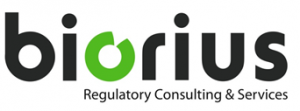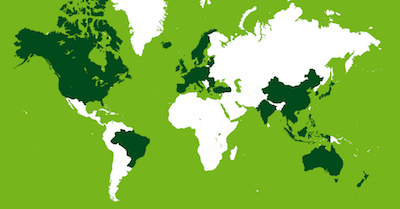 Numerous peer-reviewed articles highlighted the toxicity of hair dye substances and notably their concerning carcinogenic, genotoxic and skin sensitizing properties. Concerned by the potential risks for the consumers, the SCCS, the EU Commission, the Member States and the Industry developed an overall strategy to evaluate a number of hair dye substances and, when necessary, regulate them via the annexes of the EU Cosmetics Regulation.
Numerous peer-reviewed articles highlighted the toxicity of hair dye substances and notably their concerning carcinogenic, genotoxic and skin sensitizing properties. Concerned by the potential risks for the consumers, the SCCS, the EU Commission, the Member States and the Industry developed an overall strategy to evaluate a number of hair dye substances and, when necessary, regulate them via the annexes of the EU Cosmetics Regulation.
Did you know Prospector® includes Regulatory Data?
Learn more about Regulatory Snapshots available on over 16,000 Personal Care & Cosmetics product profile pages.
On the basis of this evaluation, the EU Commission published a new amendment (Regulation EU No 2017/237 [PDF]) of the Regulation, adding eight entries to Annex III and updating two existing entries. The restrictions and warnings (referenced in the link provided above) relate to the following ingredients:
| Ref. number | Substance identification | |||
| Chemical name | INCI name | CAS | EINECS | |
| A | B | C | D | E |
| 8C | Ethanol, 2,2′-[(2- nitro-1,4-phenylene)diimino]bis- (9CI) | N,N'-Bis(2-Hydroxyethyl)-2-Nitro-p-Phenylenediamine | 84041-77-0 | 281-856-4 |
| 9B | 1-Methyl-2,6-bis- (2-hydroxyethylamino)-benzene | 2-Naphthalenaminium, 8-[(4- | 149330-25-6 | 443-210-1 |
| 298 | Di[2-[4-[(E)-2-[4- [bis(2-hydro xyethyl)aminophenyl]vinyl]pyridin-1-ium] butanoyl]aminoethyl] di-sulfanyl dichloride | HC Red No 17 | 1449471-67-3 | |
| 299 | Di[2-[4-[(E)-2- [2,4,5-trimethoxyphenyl]vinyl] pyridinin-1-ium] butanoyl]aminoethyl]disulfanyl dichloride | HC Yellow No 17 | 1450801-55-4 | |
| 300 | 1H-Pyrazole-4,5- diamine, 1-hexyl-, sulfate (2:1) | 1-Hexyl 4,5- Diamino Pyrazole Sulfate | 1361000-03-4 | |
| 301 | 4-Hydroxy-2,5,6- triaminopyrimidine sulfate | 2,5,6-Triamino-4-Pyrimidinol Sulfate | 1603-02-7 | 216-500-9 |
| 302 | 2-[(3-Aminopyrazolo[1,5-a]pyridin-2-yl)oxy]ethanol hydrochloride | Hydroxyethoxy Aminopyrazolopyridine HCl | 1079221-49-0 | 695-745-7 |
| 303 | Phenol, 3-amino- 2,6-dimethyl | 3-Amino-2,6- Dimethylphenol | 6994-64-5 | 230-268-6 |
| 304 | 2-Naphthalenaminium, 8-[(4- | Basic Brown 17 | 68391-32-2 | 269-944-0 |
Furthermore, the definition of a hair product in the EU Cosmetics Regulation excludes an application on eyelashes. In the EU, “Hair product” means a “cosmetic product which is intended to be applied on the hair of head or face except eye lashes.”
A specific safety assessment was therefore needed for the application of hair dye substances on eyelashes and this amendment allows the use of five new ingredients:
| Ref. number | Substance identification | |||
| Chemical name | INCI name | CAS | EINECS | |
| A | B | C | D | E |
| 200 | 2,4,5,6-Tetraaminopyrimidine sulphate | Tetraaminopyrimidine Sulfate | 5392-28-9 | 226-393-0 |
| 206 | 3-(2-Hydroxyethyl)- p-pheylenediammonium sulphate | Hydroxyethyl-p-Phenylenediamine Sulfate | 93841-25-9 | 298-995-1 |
| 211 | 2-Aminopyridin-3-ol | 2-Amino-3- Hydroxypyridine | 16867-03-1 | 240-886-8 |
| 243 | 1,3-Benzenediol, 2- methyl | 2-Methylresorcinol | 608-25-3 | 210-155-8 |
| 272 | 4-Aminophenol | p-Aminophenol | 123-30-8 | 204-616-2 |
Please, note that the use of these eyelash dyes is restricted to professional products.
This piece of legislation entered into force in March 2017.
Resource:
 Fred Lebreux holds a Ph.D. in organic chemistry and a master in management. After a post-doctoral position at the Ecole Polytechnique in Paris where he developed new pathways for the synthesis of biologically active substances, he was hired by IFRA, the International Fragrance Association. After a few years at the position of IFRA Scientific and Regulatory Manager, he was promoted IFRA Scientific Projects Manager. In both positions, Fred actively contributed to defend the collective interests of the global fragrance industry.
Fred Lebreux holds a Ph.D. in organic chemistry and a master in management. After a post-doctoral position at the Ecole Polytechnique in Paris where he developed new pathways for the synthesis of biologically active substances, he was hired by IFRA, the International Fragrance Association. After a few years at the position of IFRA Scientific and Regulatory Manager, he was promoted IFRA Scientific Projects Manager. In both positions, Fred actively contributed to defend the collective interests of the global fragrance industry.
After 5 years with IFRA, Fred joined BIORIUS at the position of Scientific and Regulatory Director. At BIORIUS, the leading consultancy company in scientific and regulatory services for the Cosmetic Industry, he developed further the competences of his team, ensured the quality of deliveries, improved important processes, created effective working relationship with Biorius’ clients and solved complex issues.
In October 2015, the Board of BIORIUS nominated Fred Lebreux as the new Chief Operating Officer, entrusting him the daily operations of the company. In his new role, Fred took over the global supervision of the Department of Operations and the Department of Scientific and Regulatory affairs and will contribute to strengthen their current organization.
The views, opinions and technical analyses presented here are those of the author or advertiser, and are not necessarily those of ULProspector.com or UL Solutions. The appearance of this content in the UL Prospector Knowledge Center does not constitute an endorsement by UL Solutions or its affiliates.
All content is subject to copyright and may not be reproduced without prior authorization from UL Solutions or the content author.
The content has been made available for informational and educational purposes only. While the editors of this site may verify the accuracy of its content from time to time, we assume no responsibility for errors made by the author, editorial staff or any other contributor.
UL Solutions does not make any representations or warranties with respect to the accuracy, applicability, fitness or completeness of the content. UL Solutions does not warrant the performance, effectiveness or applicability of sites listed or linked to in any content.





Please will you le tme have a reference that suports the quote below that i found on this page ( https://www.ulprospector.com/knowledge/6427/pcc-eu-cosmetic-regulation-hair-eyelash-dyes/ )
Furthermore, the definition of a hair product in the EU Cosmetics Regulation excludes an application on eyelashes. In the EU, “Hair product” means a “cosmetic product which is intended to be applied on the hair of head or face except eye lashes.”
This seems to suggest that eyelashes are excluded from hair product – does that mean that products applied to them are not included in the CPNP requirement and that articles applied to them are not classed as cosmetic products?
Hi Cliff,
Thank you for your question. Actually this definition of hair product excluding eye lashes comes from the EU Cosmetics Regulation itself (EC No 1223/2009), in the Preamble to Annexes II to VI. This definition is re-used in other documents and notably The SCCS Notes of Guidance (SCCS/1564/15).
So, indeed, ingredients specifically approved for hair products (in Annex III) cannot be used for eyelashes unless it has been explicitly approved for eyelashes. However, eyelashes products fall under the scope of the EU Cosmetics Regulation and you should be very careful to only place on the EU market products that fully comply with this piece of legislation.
Best regards,
Fred
Thanks for sharing it
Hello,
Thank you for posting this explanation and research. Can I ask if you are aware of a site or source that catalogues safe ingredients or products or, more likely, is there a “Stamp of approval” that we as consumers could be made aware of that we could and should look for on products?
Thank you very much and great work.
Dear Christina,
Sorry for this very late reply and thank you for your positive feedback.
I do not know where you live exactly and this is important as each regulatory framework is different. The European legislation is probably one of the strictest cosmetic regulation in the world. All cosmetic products placed on the EU market have to be duly evaluated according to prescriptive safety assessment methodologies. In other words, if a product is legally placed on the EU market, you should not feel concerned about its safety.
I recognize that, in some countries, the legislation does not properly protect and it can be difficult for a consumer to make a well-informed purchasing decision. There are some private initiatives certifying cosmetic products on the basis of their safety profile. Some of them do a good job while others simply do pseudo-science and marketing.
Best regards,
Fred